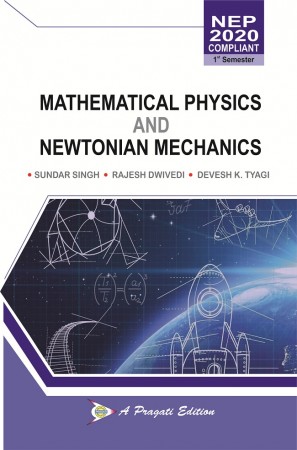









0 Ratings
0 Reviews
597 Views
National Education Policy-2020 (NEP-2020) aims at making Indians as global citizens by acquiring globally accepted standards of knowledge .... Read More
National Education Policy-2020 (NEP-2020) aims at making Indians as global citizens by acquiring globally accepted standards of knowledge and is being introduced for most part in Indian education system from the academic session 2021-2020. To incorporate its provisions in higher education, a common minimum syllabus in physics, like all other subjects, have been designed and is made applicable for all U.P. State Universities and Colleges from this very academic session. The present book is a small step in this direction as far as undergraduate physics students are concerned. Authors feel immense pleasure in presenting this book to the first semester students for their physics course for obtaining a Certificate (in Basic Physics & Semiconductor Devices) or Diploma (in Applied Physics with Electronics) or Degree (in Bachelor of Science). The book has been written strictly according to the common minimum syllabus for all U.P. State Universities and Colleges. It has evolved from the lectures delivered by us to undergraduate students during our more than twenty five year long teaching carriers. The book is divided into two parts (A & B). Part-A consisting of four units (and also 4 chapters) is devoted to Basic Mathematical Physics. Part-B consists of four units divided into 6 chapters and is devoted to Newtonian Mechanics & Wave Motion. Some salient features of the book are: Ÿ The book presents its content using simple language and lucid style, so as to make things easier for students. Ÿ Each topic is illustrated with the help of a number of pictures, diagrams, graphs etc. Theory is further explained by mathematical analysis which includes all the intermediate steps involved therein. Ÿ Numerous solved examples have been included in each chapter to illustrate the application of concepts of physics for solving specific problems. Ÿ The exercise to each chapter contains a number of long and short answer questions and numerical problems frequently asked in final exams of various Indian Universities. The exercise also contains a good number of objective type questions covering the entire syllabus which are very useful from competition point of view. Acknowledgements We feel greatly indebted to many authors and publishers whose books we have been consulting freely to develop an understanding of physics. We are thankful to our colleagues for useful discussions on various topics and for their encouragement to complete this work. We would also like to thank Mr. Ajay Mittal and Mr Sanjay mittal, publishers of the book, for their keen interest and kind cooperation in bringing the book well in time and in such a fine form. Finally, we must thank to our family members whose cooperation and understanding was overwhelming during the entire period of completion of the book. Any comments and suggestions for further improvement of this book will be thankfully accepted.
| Sr | Chapter Name | No Of Page |
|---|---|---|
| 1 | VECTOR ALGEBRA | 65 |
| 2 | VECTOR CALCULUS | 61 |
| 3 | COORDINATE SYSTEM | 35 |
| 4 | INTRODUCTION TO TENSORS | 14 |
| 5 | DYNAMICS OF A SYSTEM OF PARTICLES | 33 |
| 6 | DYNAMICS OF A RIGID BODY | 37 |
| 7 | ELASTICITY | 36 |
| 8 | MOTION OF PLANETS AND SATELLITES | 43 |
| 9 | FREE DAMPED AND FORCED OSCILLATIONS | 53 |
| 10 | WAVE MOTION | 53 |